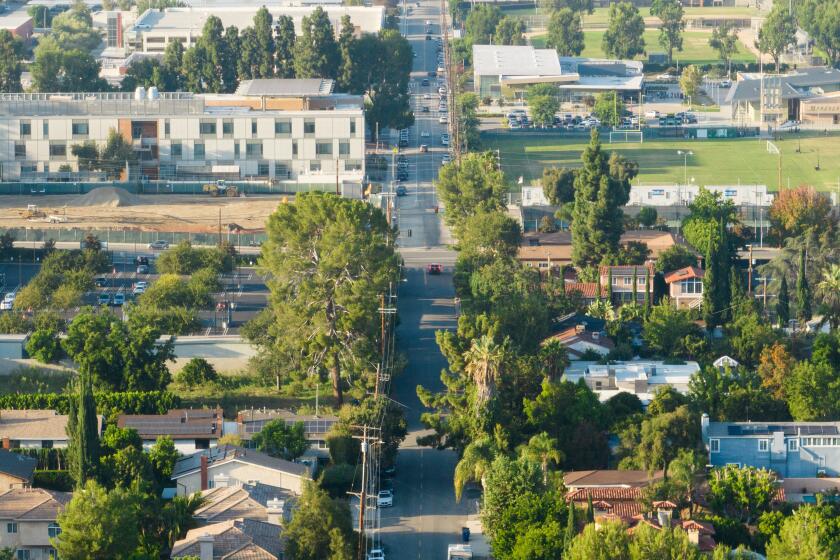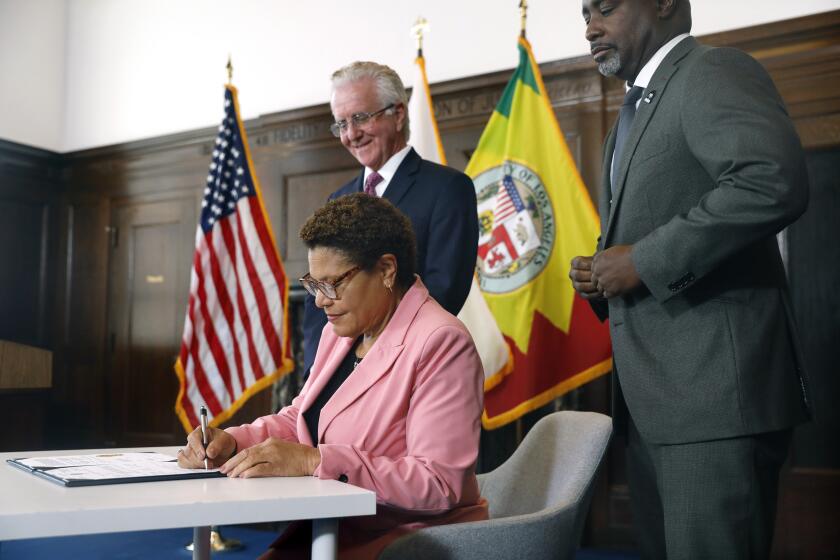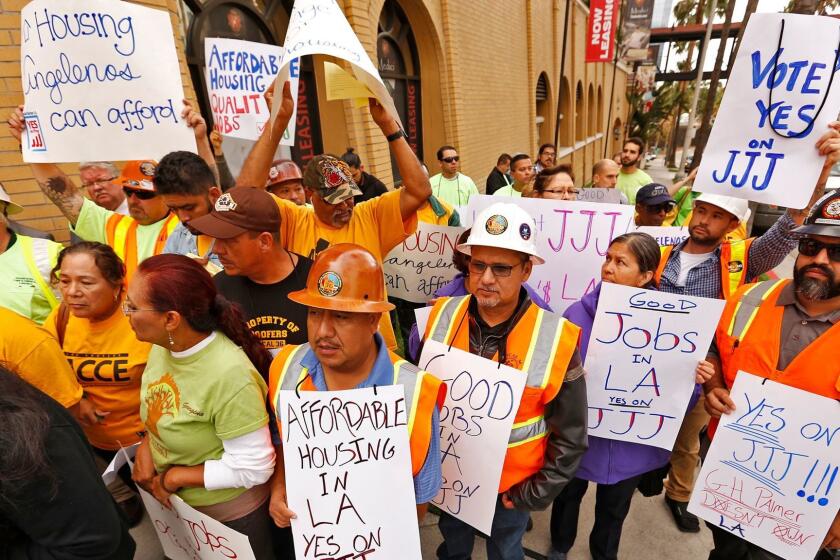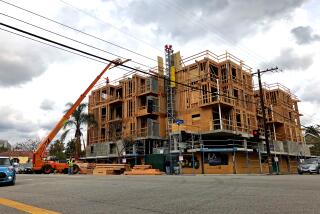Opinion: Don’t gut L.A.’s best shot at building affordable housing
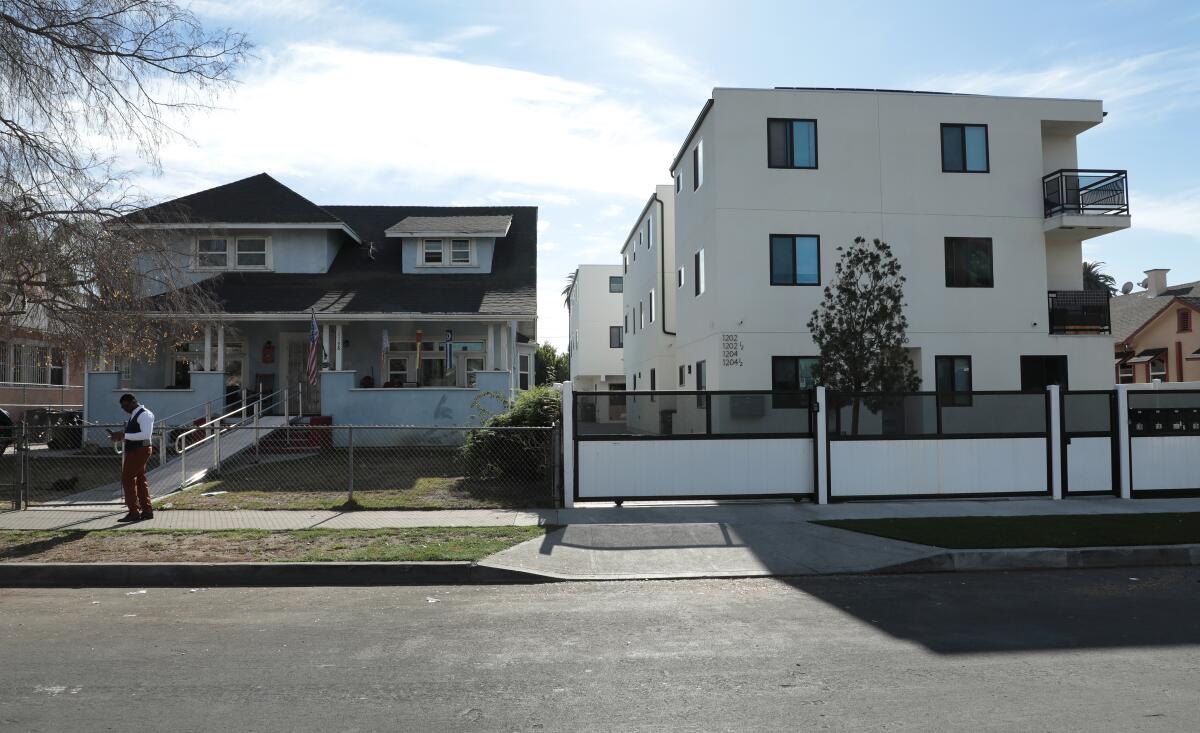
- Share via
Last October, the Los Angeles City Planning Department ditched some of the region’s most ambitious actions to tackle racial and economic segregation and confront the ongoing affordability crisis. Two housing initiatives — an Affordable Housing Overlay and expansions to the Transit Oriented Communities program — would have made it possible to build affordable and mixed-income housing in areas traditionally off-limits to multifamily homes.
But core components of these proposals have been withdrawn to shield single-family neighborhoods from development. This move puts L.A. at risk of running afoul of California’s fair housing law, falling short on housing production goals, and increasing displacement in its most vulnerable communities. Revised proposals are expected to be made public this winter or spring, with public outreach to follow. City leadership can and should reverse this harmful decision.
Mayor Karen Bass announced Executive Directive 1 as a signature policy to speed up affordable housing. But limiting it to multi-family neighborhoods is shortsighted.
The original proposals were a response to state mandates meant to accelerate housing construction to meet demand. Under these mandates, Los Angeles has made plans to add more than 450,000 new housing units through 2029, including amending its zoning rules by February 2025 to accommodate about 250,000 more homes.
California law requires that development programs “affirmatively further fair housing,” meaning that they should “overcome patterns of segregation and foster inclusive communities” and “address significant disparities in housing needs and access to opportunity.” In certifying L.A.’s housing plan, the state made clear that “rezoning for multifamily housing in higher opportunity and low-density neighborhoods” was crucial.
The initial Transit Oriented Communities expansion and Affordable Housing Overlay did just that. In their original form, the two initiatives combined could have added almost 200,000 new units citywide, with a focus on higher-income, transit-accessible neighborhoods. Many of these communities are dominated by single-family detached houses, including Rancho Park, Westwood and Encino, among others.
The city might make permanent a directive from Mayor Bass that streamlines development. But in its current form, the policy threatens to make low-income Angelenos homeless.
But on Oct. 26, the planning department backpedaled, announcing that the programs would no longer be considered for single-family-zoned land. This followed pressure from the Hancock Park Homeowners Assn. and other homeowner groups.
The change is significant, and unjust. Our review of the city’s data shows that L.A.’s current capacity for development — places where denser housing is already allowed, ignoring the rezoning proposals — is disproportionately concentrated in lower-income neighborhoods and communities of color. The data indicate that half of this capacity is in the poorest quarter of Los Angeles, while the wealthiest 10% of the city furnishes less than 1%.
We also found that the change to exclude single-family neighborhoods from rezoning slashes the two programs’ capacity by up to 82%, with the greatest reversals in the city’s wealthiest and whitest neighborhoods. Among the census tracts where the proposed zoning changes were cut by 75% or more, the median household income is $111,000. In neighborhoods where the original proposals are still being considered, it is $67,500. The racial and ethnic disparities are also stark, with tracts in the former group having more than twice the share of white residents as those in the latter (57% to 23%, respectively).
A program approved by voters in 2016 makes it easier to build denser housing near rail and major bus stops if the projects include affordable housing.
From a fair housing perspective, the Transit Oriented Communities expansion and Affordable Housing Overlay in single-family neighborhoods were L.A.’s strongest proposals. None of the alternatives come close to their potential to produce new mixed-income housing in the city’s wealthiest neighborhoods, where exclusionary policies have limited opportunities for lower- and middle-income households and people of color.
With less capacity to build in higher-income neighborhoods where developers most want to invest, it’s likely that fewer apartments and condos will be constructed citywide in the years to come. As the housing supply falls further behind growing demand, affordability will decline. Meanwhile, more homes will be built in lower-income, renter-dominated neighborhoods, where residents are at greater risk of displacement as older apartments make way for larger multifamily buildings.
Angelenos, and Californians, shouldn’t accept the decision to exempt L.A.’s richest neighborhoods from helping to solve our housing crisis, insulating them from changes the city needs. The outcry of a vocal minority is no excuse to renege on the city’s commitments to fair housing.
The proposed changes are disheartening, but Los Angeles still has time to adopt a progressive housing affordability strategy, adding homes where they’re needed most. The city can start by restoring the rezoning plan to its original form, or by implementing similar strategies that direct most of the city’s new housing to higher-opportunity neighborhoods. Until L.A. takes those steps, very little about this housing plan can be called fair.
Aaron Barrall is a housing data analyst for the UCLA Lewis Center Housing Initiative, which Shane Phillips manages.
More to Read
A cure for the common opinion
Get thought-provoking perspectives with our weekly newsletter.
You may occasionally receive promotional content from the Los Angeles Times.
